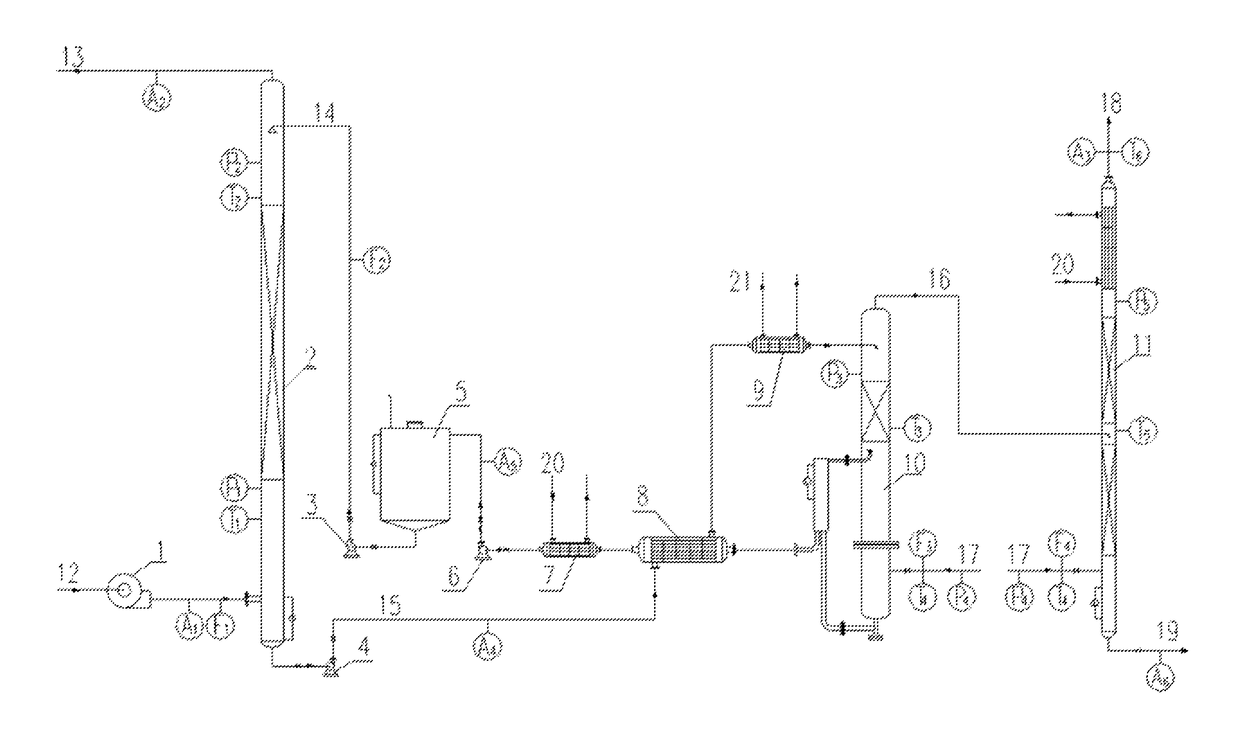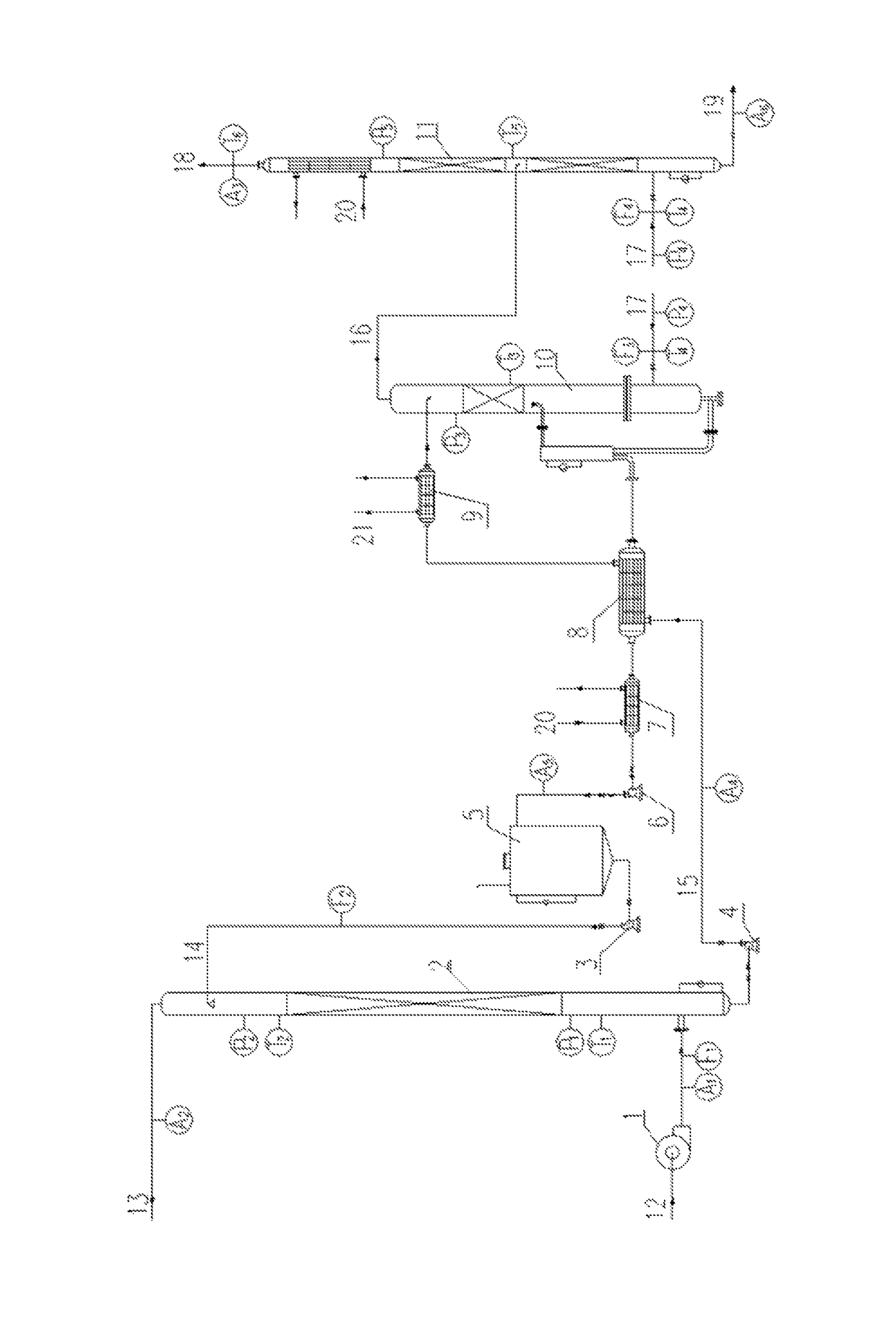At the same time,
sulfur dioxide,
sulfur trioxide,
hydrogen chloride,
hydrogen fluoride,
nitrogen oxides, harmful organic substances,
bacteria, and the like are readily adsorbed on the surface of these particles, thus the content of atmospheric
suspended particles (which are generally referred to as PM100, PM10, PM2.5, etc.) is increased significantly, resulting in the phenomena of
haze and atmospheric photochemical reactions, and causing serious environmental
pollution.
Therefore, research on
flue gas desulfurization and denitration is quite urgent and also challenging.
The consumption of dry desulfurization agent is extremely large, and it is expensive, while a large quantity of waste residues is produced at the same time, which need to be piled up and landfilled, resulting in the phenomena of serious
pollution transfer and secondary
pollution.
With large limestone consumption, huge devices of crushing and milling, and high
power consumption, the investment is great.
Moreover,
solid precipitates, which tend to clog the devices, are produced during the absorption process.
However, the
magnesium sulfite solids produced in the process tend to clog the pipelines and devices, and also,
magnesium sulfite does not decompose until it is calcined at a temperature above 1235K, thus
energy consumption is high, investment is large, and secondary pollution is serious.
At the same time, the consumption of ammonia is very large, and ammonia is converted to low-valued
ammonium sulfate, thus the cost of desulfurization is high, and
crystallization is likely to occur, clogging devices and pipelines.
Moreover, ammonia is highly corrosive, thus the device
corrosion is serious, and
ammonia production process is a process of
high energy consumption and high pollution, excessive consumption of ammonia is actually a process of indirectly worsening environmental pollution and increasing
energy consumption, therefore the use of ammonia should be minimized.
This technology and process can only be applied at seaside, because the
seawater consumption is particularly large.
The process is better in terms of conception, however, practical tests show that the regeneration rate by heating of
sodium (or
potassium)
bisulfite solution is very low, only a very small part of
sodium (or
potassium)
bisulfite can be converted to
sodium (or
potassium) sulfite, most of sodium (or potassium)
bisulfite cannot be decomposed, and steam consumption is large.
Therefore, industrialization of the process has always been unachievable.
There are large-scale application examples of this process in the United States, Germany, France and Japan, but its steam consumption is large, and
energy consumption is high.
The process is better in terms of conception, however, practical tests show that the regeneration rate of sulfite in the
organic acid-
organic acid salt
buffer solution is very low during
steam heating, only a very small part of sulfite can be converted to
organic acid salt, most parts of sulfite cannot be decomposed, and steam consumption is very large.
Therefore, the industrialization of the process has always been unachievable.
As the solution contains some calcium ions,
precipitation may occur during desulfurization, clogging pipelines and devices.
As the
flue gas contains about 4%-9% O2,
ammonia gas or amino-containing
urea will react with O2 to produce
NOX, ammonia is thus consumed, meanwhile ammonia reacts incompletely, some ammonia is discharged into
atmosphere together with the
flue gas, and the loss of ammonia increases, resulting in the phenomenon of secondary pollution.
There are also some drawbacks in the existing methods for removing NO from flue gases by SCR and SNCR.
Excessive injection of ammonia or
urea will lead to the so-called ammonia penetration, and the discharged ammonia is even more harmful than the discharged
NOX.
In addition, the catalyst used in the process of denitration will suffer from impingement and abrasion by high-concentration
smoke and
contamination by impurities in fly ashes.
Excessively high temperature of flue gas will lead to catalyst
sintering and deactivation, and the presence of SO2 will lead to a rapid decline in catalyst activity.
As the flue gas contains about 4%-9% O2,
ammonia gas will react with O2 to produce
NOX, ammonia is thus consumed, meanwhile ammonia reacts incompletely, some ammonia is discharged into
atmosphere together with the flue gas, and the loss of ammonia increases, resulting in the phenomenon of secondary pollution.
However, since
ozone-generating device is very expensive, a great investment is required; and
ozone production cost is very high, that for the oxidation of 1 mole of SO2 to SO3 or of 1 mole of NO to NO2, the
ozone consumption required is 1.5-3 moles, respectively, while for producing 1 kg of ozone, about 10 kWh of
electricity and 10-20 kg of
pure oxygen are to be consumed, respectively; the energy consumption is large, the expenditure is high, and the investment is great, making the large-scale industrialization of
flue gas desulfurization and denitration by ozone unachievable currently.
However, in
actual use, this technology has relatively low denitration efficiency and very
high ozone consumption.
To meet emission standards, its
operating cost is particularly high, and enterprises cannot afford it, so large-scale industrialization of this technology has always been unachievable.
 Login to View More
Login to View More 


